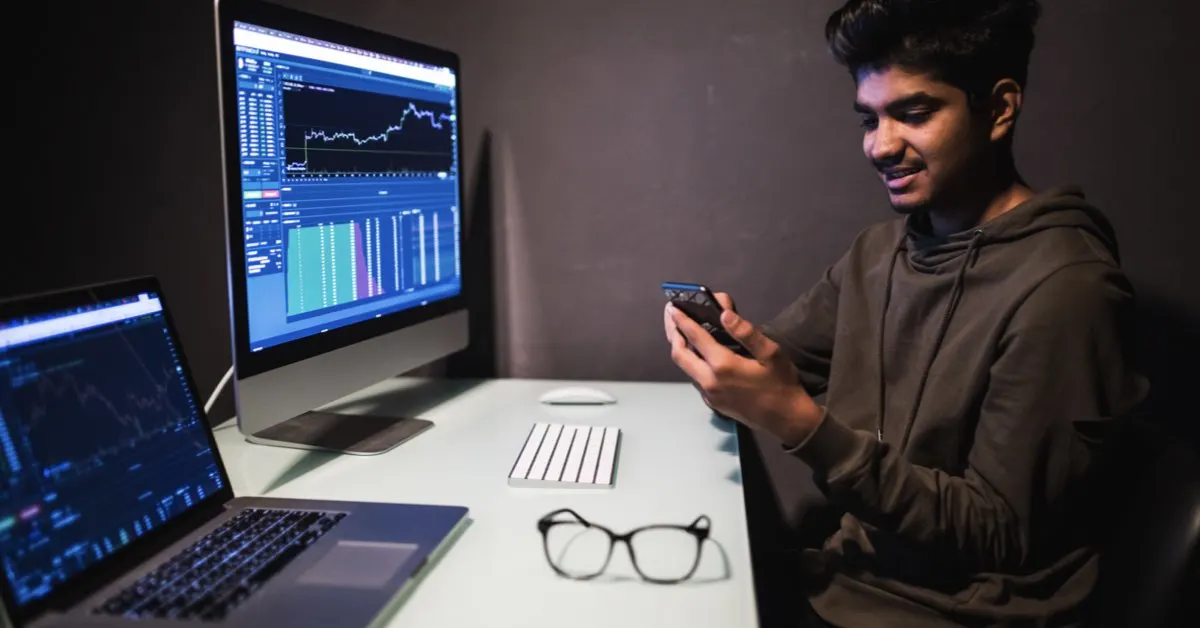Technology is quickly replacing human efforts, including logical thinking, as witnessed in the use of AI to execute various tasks. The financial markets have also incorporated similar technology, such as the use of trading bots.
Trading bots are automated applications that execute trades based on certain algorithms. They are used in forex trading, crypto trading, stock trading, and many other financial trading markets.
So, how do trading bots work? If you are new to the financial trading world, then this article is for you. Read to the end to find out more.
How Do Trading Bots Work?
Trading bots use preset algorithms and rules to perform successful trades. The goal is to determine the best time to buy and sell financial assets.
- Analyzing data – These bots are programmed and trained to carefully analyze market trends, study charts, monitor signals, and completely understand data before making any trades for you. Some advanced trading bots can even predict the future of trading. In fact, research shows that about 60 to 73% of all U.S. equity trading is executed by algorithmic systems rather than purely human traders.
- Generating signal – The main reason to use bots is to know when to enter or exit a trade. Trading bots generate a signal after analyzing data carefully to tell you which move to make. As a trader, you need to understand these signals because they are set on predefined parameters.
- Executing trade – Do trading bots work? Yes, and they can even trade for you automatically. Once a signal is triggered, they don’t hesitate to trade if you have it set up correctly. They trade through your chosen broker platform, and you can find out more about this on the website. To put the scale into perspective, the global algorithmic trading market was valued at around USD 17.2 billion in 2024 and is projected to reach approximately USD 42.5 billion by 2033, growing at a CAGR of about 9.5 %.
Choosing the Right Trading Bot
How do trading bots work? By now, it is easy to tell, even if you are new to trading. The next step is choosing the right bot to trade for you.
- Pick the type of bot that works for you – Do you want a trend‑following bot, a market‑making bot, or a scalping bot? All of these bots work differently, and you should take the time to understand them before choosing one. Some focus on liquidity through small price differences while others exploit big price differences.
- Understand the benefits of bots – How do trading bots work? Answering this question will help you understand the benefits of trading bots. Since they are automated, they can follow the market closely, analyze data, and generate a signal in a more precise way than humans. Furthermore, they work 24/7 with the utmost speed. Therefore, bots increase the chances of making a profit.
To highlight the broader trend: the AI trading platform market (a subset of automated trading technologies) was estimated at USD 11.23 billion in 2024 and is expected to grow to USD 33.45 billion by 2030, at a CAGR of around 20 %. - Understand the risks – What are trading bots? These are apps and software based on AI technology to make decisions and trade for you. Therefore, they come with some risks, especially if they have poorly designed algorithms, are over‑optimized, or encounter technical failures. Sometimes, traders encounter fake bots and lose a lot of their investment. To avoid these risks, it is best to work with a reliable trading bot provider platform.
Indeed, a regulatory warning states that some bots claim “100 % win” rates or extremely high returns; such claims are dubious and warrant caution, CFTC.
The Future of Automated Trading
What are trading bots? How do trading bots work? Whether you are a beginner or a seasoned trader, you now have answers to these questions. These tools have become an essential part of modern trading, offering efficiency, speed, and data‑driven decision‑making capabilities that can significantly enhance performance when used correctly.
Trading bots eliminate emotional decision‑making, one of the most common pitfalls in human trading. By relying on algorithms and pre‑defined strategies, traders can maintain discipline even during volatile market conditions. Moreover, bots allow users to diversify their strategies and monitor multiple assets simultaneously, something nearly impossible for a human to do effectively.
However, as with all automated tools, caution is key. Traders must backtest strategies thoroughly, ensure their bots are secure, and keep abreast of market changes that might require adjustments to the bot’s logic. The financial technology landscape continues to evolve rapidly, and staying informed is essential to harness the full potential of trading automation.
As global interest in AI‑powered trading grows, so too does the competition. Reports suggest that the AI trading market is projected to reach USD 35 billion by 2030 as demand soars for data-driven insights and optimal trade execution. AI and machine learning in trading could improve portfolio returns by up to 20% over traditional strategies by 2030.
ⓘ As part of our ongoing support for startups and SMEs, LAFFAZ Media publishes feature and resource articles that may include references and links to external websites. These inclusions are selected at our editorial discretion to provide valuable information to our readers. LAFFAZ Media does not control, endorse, or assume responsibility for the content or practices of external websites. For more details, please refer to our Terms and Conditions.





